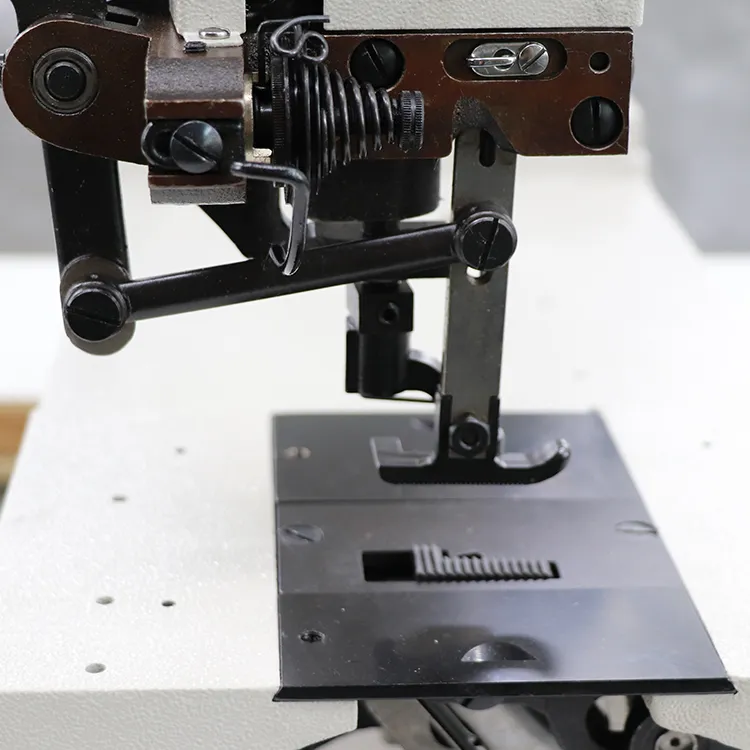Exploring the Versatility of 301 Lock Stitch in Modern Sewing Techniques
Understanding the 301 Lock Stitch A Key Component in Textile Engineering
In the world of textile engineering, one of the most critical stitches is the lock stitch, particularly the 301 lock stitch, which is widely used in industrial sewing applications. This stitch type is fundamental for creating durable, strong seams in a variety of fabrics, making it an essential technique in the garment industry. Understanding the characteristics, applications, and advantages of the 301 lock stitch can provide valuable insights for anyone involved in textile production.
What is the 301 Lock Stitch?
The 301 lock stitch is a type of stitch commonly formed by using two threads an upper thread and a lower thread. This stitch is created through a specific mechanism in sewing machines, where the needle carries the upper thread down through the fabric and forms a loop. The lower thread, which is fed from the bobbin, interlocks with this loop to secure the stitch. The unique feature of the 301 lock stitch is that it creates a flat and smooth seam on both the top and bottom of the fabric, which is critical for aesthetic and functional purposes.
Characteristics of the 301 Lock Stitch
This stitching technique is known for its reliability and strength. The 301 lock stitch produces a consistent, uniform appearance, which is particularly important in garments where visual appeal is paramount. Additionally, this type of stitch has a relatively high tensile strength, allowing it to withstand considerable amounts of stress without ripping or fraying. Moreover, the 301 lock stitch is versatile, usable on various materials ranging from lightweight fabrics to heavier textiles, making it a staple in numerous sewing applications.
Applications
301 lock stitch

The 301 lock stitch is primarily used in the garment manufacturing industry for constructing garments, including shirts, trousers, and dresses. It is especially suitable for seams that require durability, such as side seams, hems, and sleeves. Beyond clothing, the 301 lock stitch is also employed in other areas, including upholstery, where a strong and finished appearance is crucial. Additionally, it is utilized in the making of accessories like bags and belts, where both functional and aesthetic qualities are needed.
Advantages of the 301 Lock Stitch
One of the main advantages of the 301 lock stitch is its ability to create flat seams, which are less bulky compared to other stitch types. This feature not only enhances comfort when wearing garments but also provides a polished look. Furthermore, the lock stitch is less likely to unravel compared to chain stitches, making it a more secure option for sewn items.
Another significant benefit of the 301 lock stitch is the ease of unpicking. If alterations are needed, the lock stitch allows for relatively simple removal without damaging the fabric excessively. This quality is especially advantageous in high-volume production settings, where garment modifications may be necessary.
Conclusion
The 301 lock stitch is a vital component in the textile and garment industries, providing strength, durability, and a polished finish. Its ability to perform well on diverse fabrics and materials makes it indispensable for manufacturers aiming to deliver high-quality products. As sewing technology continues to evolve, the importance of the 301 lock stitch will remain, highlighting the ongoing relevance of traditional sewing techniques in modern textile applications. Understanding this stitch not only enriches knowledge in garment construction but also underscores the art and science behind the textiles we often take for granted.
-
Heavy Duty Leather Sewing Machine: A Must-Have for Professional LeatherworkNewsMay.28,2025
-
Leather Sewing Machine: Essential for High-Quality LeathercraftNewsMay.28,2025
-
Extra Heavy Duty Sewing Machine for Premium Leather ApplicationsNewsMay.28,2025
-
Walking Foot Cylinder Arm Sewing Machine: Precision and Power CombinedNewsMay.28,2025
-
Industrial Cylinder Arm Sewing Machine: Engineered for High-Performance StitchingNewsMay.28,2025
-
Cylinder Bed Sewing Machine: A Powerful Solution for Precision StitchingNewsMay.28,2025
-
Zigzag Sewing MachineNewsMay.12,2025





























